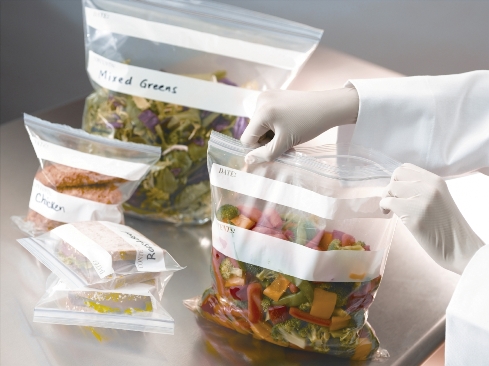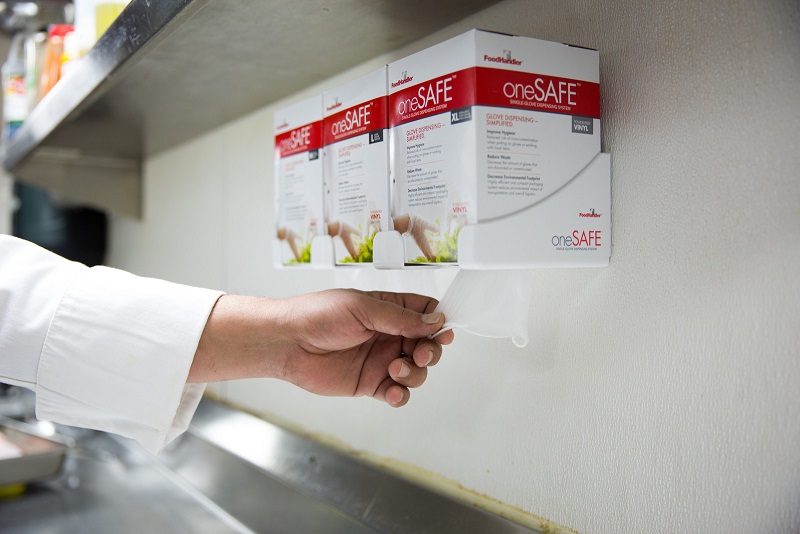Remembering the Importance of Food Safety During Food Safety Education Month
In the foodservice industry, every plate that leaves your kitchen carries not just flavors and aromas, but also the responsibility of providing safe and wholesome meals to customers. Celebrated each September, National Food Safety Education Month provides a platform for foodservice professionals to reaffirm their commitment to food safety. It’s a reminder that excellence in foodservice operations must always be accompanied by excellence in food safety; a reminder that any great meal begins with safe food as the foundation.
With everything you face as a foodservice operator, why should National Food Safety Education Month be so important for your business? If you’ve read these blogs at all, you have likely read about the importance we place on building a culture of food safety. September can be the month that you refocus your values. Your food safe culture begins with you as a manager, how you interact with your employees and where you place emphasis in your daily operations. A food safety culture values food safety – remember that your priorities can change daily, but your values stay the same. Use September to reaffirm your values with your employees and your customers.
Food safety is not just a regulatory requirement; it helps to establish and build trust with your customers. When patrons dine out, they trust that their meal will be safe to eat. By actively participating in National Food Safety Education Month, foodservice establishments reinforce their commitment to maintaining this trust with their guests.
Food safety may play a behind-the-scenes role, but its importance cannot be overstated.
For most operators, this is a great time to revisit some of our food safety practices that may have weakened during the peak summer months. What better time to do this than during this lull between summer and the holiday season? What are some ways in which you can participate in food safety month? Here are a few ideas to consider.
- Reinforce the importance of food safety training with your employees. Knowledge is the first line of defense against foodborne illnesses. Comprehensive food safety training for your staff should be a goal that all operators strive to achieve.
- If you have a HACCP program, or components of a HACCP program, conduct a thorough audit of the plan or program you have in place. Is it working? What could be improved? Engage employees in the process early on – they are truly the ones who know how it can be improved.
- Revisit your Master Cleaning Schedule, has it been kept up-to-date? Ensure that all equipment and utensils are properly cleaned and sanitized after use and are maintained appropriately. Not only will this help protect the food supply, but it will also help in extending the useful life of your equipment.
- Take a few minutes and double check your food safety supplies. Make sure your employees have the correct amounts and sizes of gloves, handwashing supplies, and cleaning chemicals to use on the job. Also be sure to inventory thermometers, and while you’re at it, make sure they are properly calibrated.
Food safety may play a behind-the-scenes role, but its importance cannot be overstated. As we honor National Food Safety Education Month, let us celebrate the dedication and commitment of foodservice professionals who work tirelessly to ensure that dining experiences are not only memorable but also free from foodborne risks. Risk nothing,
READ MORE POSTS
Food Packaging Safety in a Vacuum
Extending the shelf life of fresh foods has come a long way in the food industry since curing meats with salt and sugar or canning vegetables with heat processing. The food service and consumer markets needed some better visual packages to draw the eye to the freshness factor and the technology of food packaging has filled our dinner plate. Vacuum packaging and modified atmosphere packaging, shortened to “MAP”, are the terms used for the method of food packaging used every time we choose convenience over more complex scratch meal preparation. According to industry statistics, billions of packages of vacuum and MAP-packaged foods flood the marketplace today. In both modified-atmosphere and vacuum packaging, food is packaged in a pouch made of barrier film.
The Eleven Commandments of Food Safety at Your Restaurant
Lists help us remember all kinds of information. Given the list of recent national foodborne outbreaks in the news, keep repeating this list to your food service team. They are kind of like “commandments”. As a professional in a food service facility we should think of the very basic food safety concepts that every crew member should aspire to learn, even though this list may have different priorities based on your menu. The first 3 apply to anyone who serves food, from a bag of popcorn to a full course meal. As chefs or managers, if we can “set the example” by repeating good food safety practices visibly to the crew, it will help them understand how important it is to the success of your facility. Thou shalt:
The Worst Customer Complaint: Foodborne Illness
Food service managers and crew try to follow the rules of food protection. Yet, occasionally a complaint may arise and these calls take priority over all other daily crises. If you have been in the food service industry long enough, you may have gotten one of these. A customer may claim, "I think your food made me ill." These words inflict instant anxiety. If it happens, here are some next steps to think about in advance of such a claim:
How Effective is Your Food Safety Training?
Basic food safety in a restaurant kitchen is not rocket science, but critically important for the crew to take the time to learn about it and for managers to set the example each day. Customers never expect or want to see a manager, chef, or a crew member make a very visible food safety mistake, like not washing hands before food prep and gloving, or touching their face or hair while prepping or handling food. Have we all seen it happen in our restaurant or as a customer elsewhere? Certainly. Are you using some creativity in your current training methods to help your staff “get it” so to speak, and reflect positive behaviors regarding food safety?










